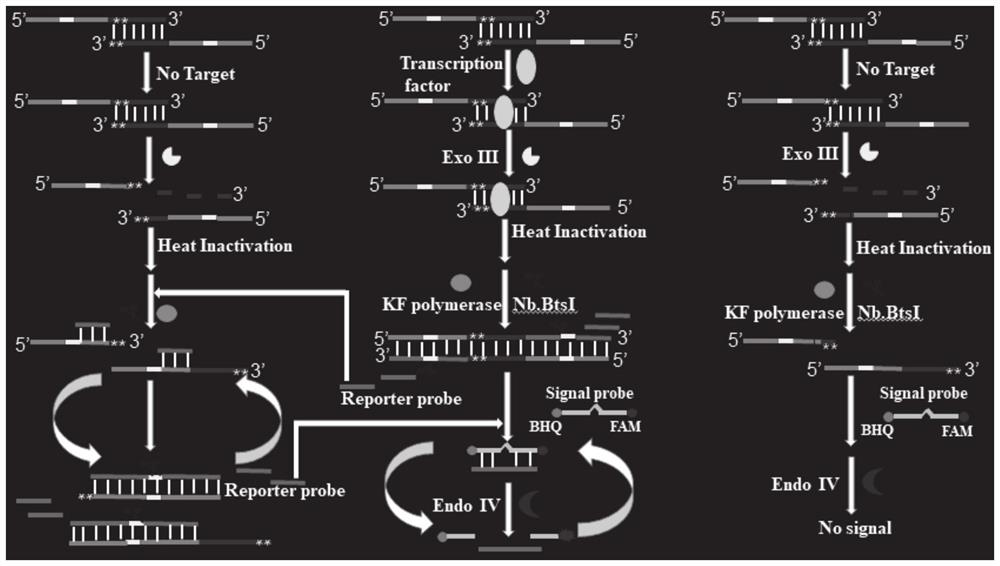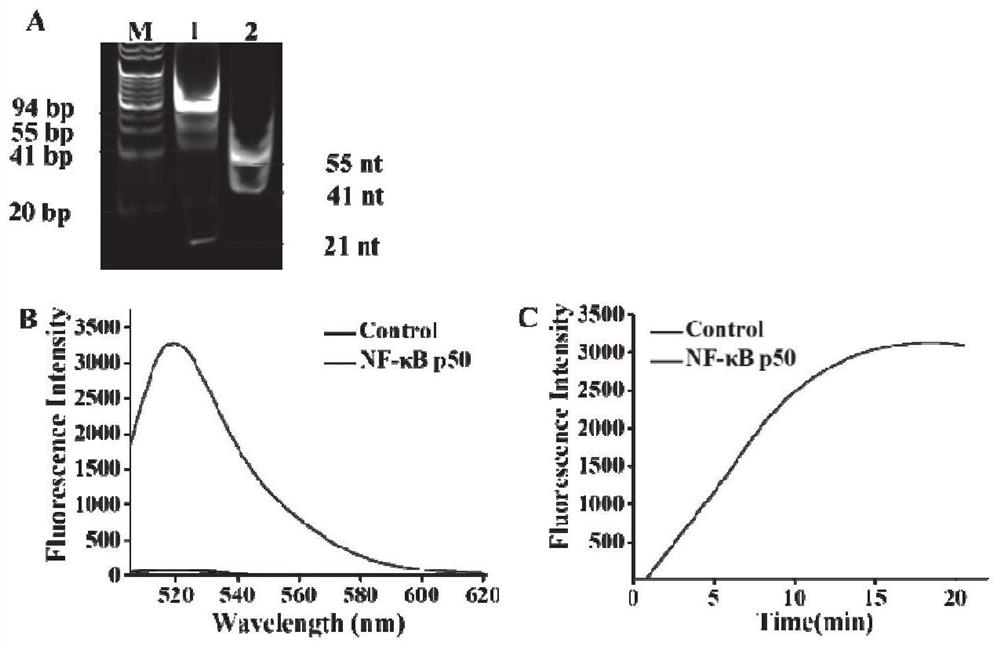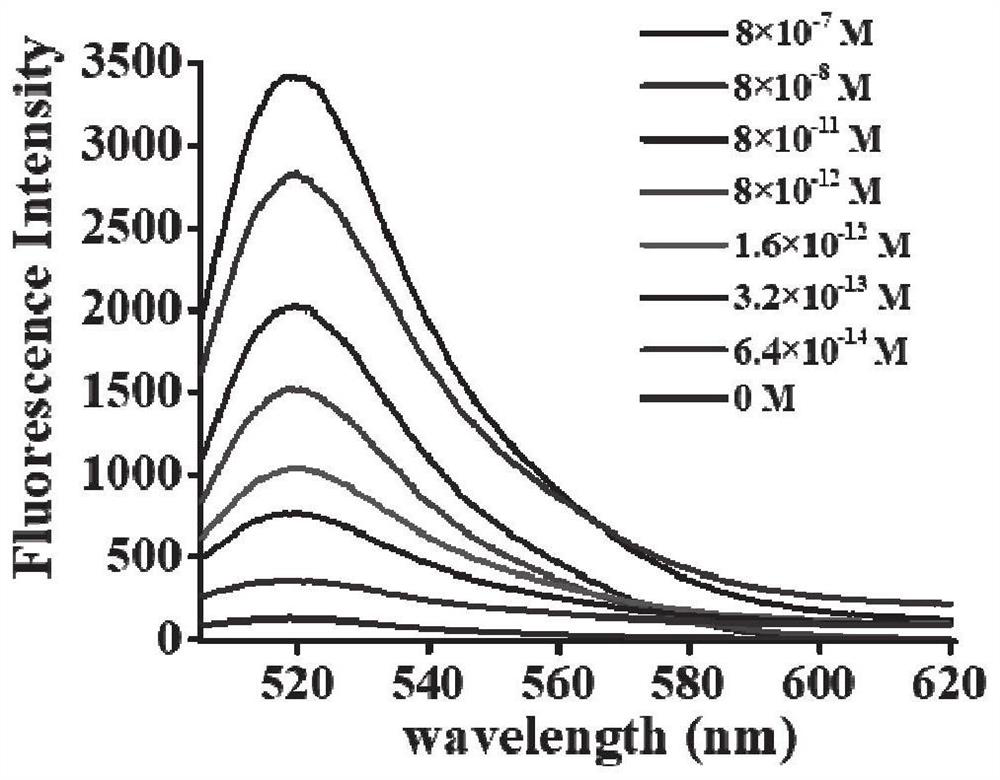Fluorescent biosensor and method for detecting transcription factor and application of fluorescent biosensor
A technology of biosensors and transcription factors, applied in the field of detection and analysis, can solve the problems of high-concentration protein and probe consumption, sensitivity needs to be improved, and long time consumption for temperature control, so as to reduce cost and operation complexity, improve Resource utilization and the effect of reducing experimental costs
- Summary
- Abstract
- Description
- Claims
- Application Information
AI Technical Summary
Problems solved by technology
Method used
Image
Examples
Embodiment
[0081] Protein-DNA interaction and exonuclease digestion: Dissolve 10 μM p50-s and 10 μM p50-antis in annealing buffer containing 100 mM NaCl and 10 mM Tris-HCl (pH 7.5) at 95 Incubate for 5 minutes at °C, then cool slowly to room temperature. Add 1 μl of purified recombinant NF-κB p50 and 500 nanomolar TF binding probe at various concentrations to 10 μl of binding buffer (10 mmol Tris-HCl (pH 7.5), 100 mmol KCl, 2 mM Molar MgCl 2 , 0.1 mmol EDTA, 0.1 mg / ml yeast tRNA, 10% glycerol, 0.25 mmol DTT). Exo III was then inactivated by adding 10 units of ExoIII and 1 μl of 10× NEB buffer 1 and incubating for another 10 min at 37°C, followed by heating at 80°C for 10 min.
[0082] Amplification reaction and fluorescence measurement: Add Exo III digested product to 50 microliters of reaction solution containing 500 nanomolar dNTP, 2.5 units of Klenow fragment polymerase, 5 units of Nt.BstI, 300 nanomolar signal probe , 5 units of Endo IV, 5 microliters of 10×NEBuffer 2 and 5 microl...
PUM
 Login to View More
Login to View More Abstract
Description
Claims
Application Information
 Login to View More
Login to View More - R&D
- Intellectual Property
- Life Sciences
- Materials
- Tech Scout
- Unparalleled Data Quality
- Higher Quality Content
- 60% Fewer Hallucinations
Browse by: Latest US Patents, China's latest patents, Technical Efficacy Thesaurus, Application Domain, Technology Topic, Popular Technical Reports.
© 2025 PatSnap. All rights reserved.Legal|Privacy policy|Modern Slavery Act Transparency Statement|Sitemap|About US| Contact US: help@patsnap.com



